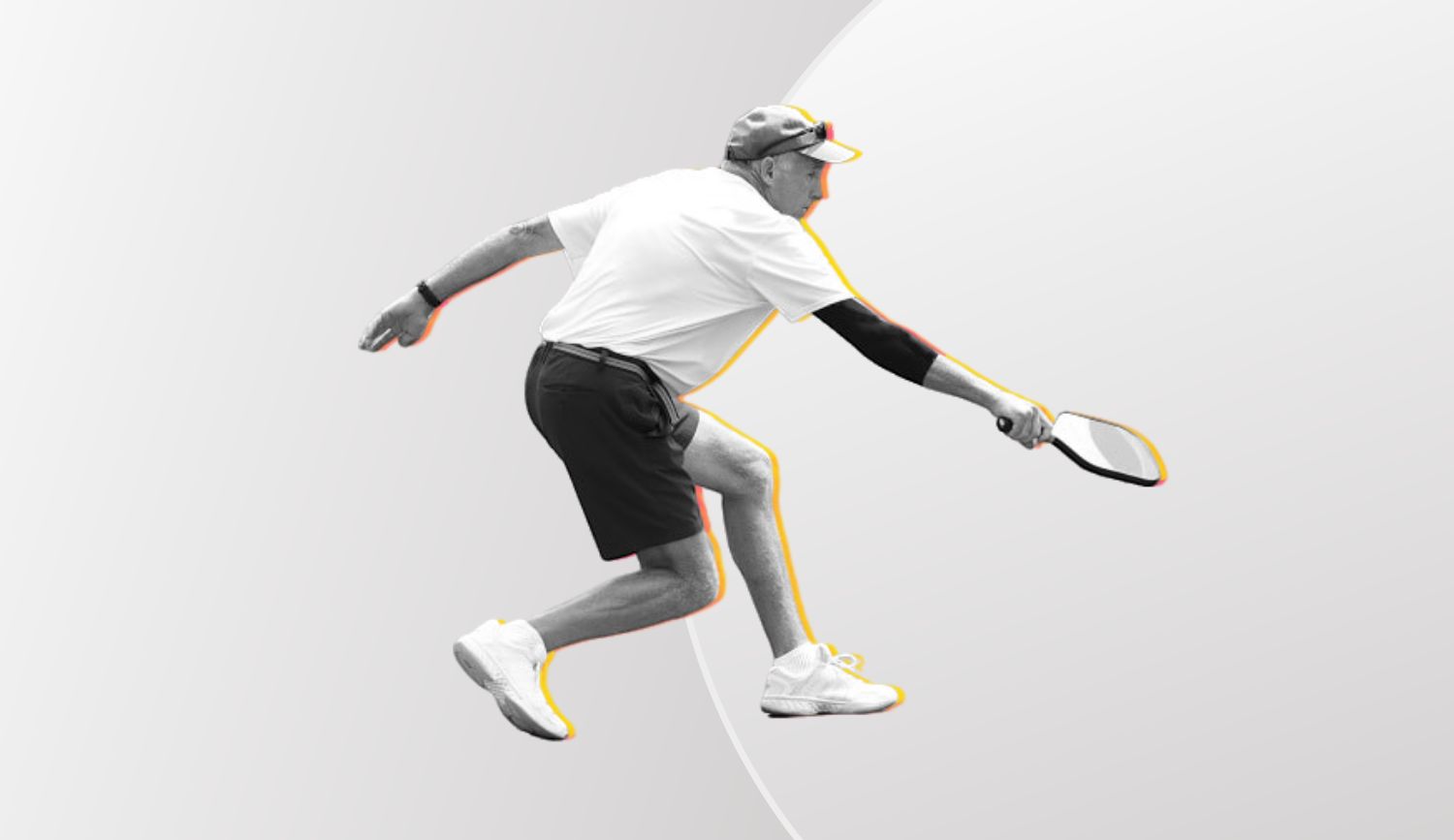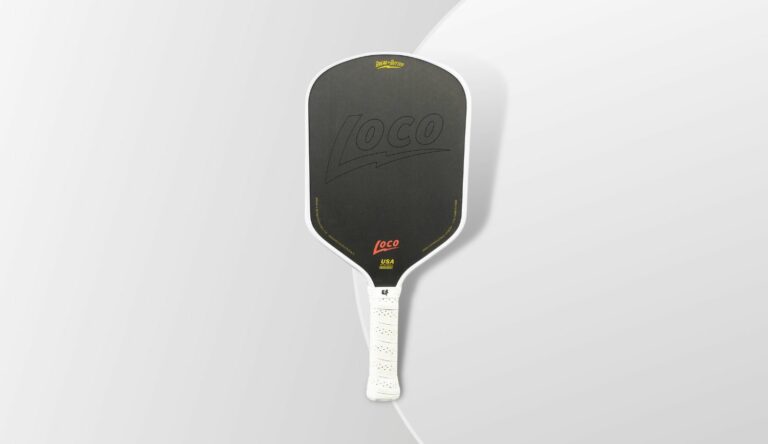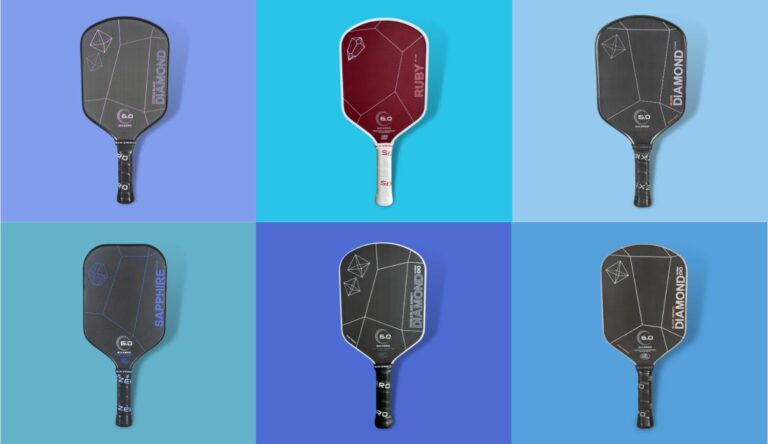The kitchen (Non-Volley Zone) rules can be confusing for new players learning pickleball
It doesn’t help that there’s misinformation about the non-volley zone out on the courts and in the Google search results. Currently, the top-ranking article for kitchen rules is spreading entirely inaccurate information.
I see a lot of beginner and intermediate players living in unnecessary fear of the kitchen due to feeling uncertain about the rules.
In this post, we’re going to clear all of that up.
By the end of the post, you’ll walk away with a clear and accurate understanding of the rules of the kitchen.
Contents
- What is the kitchen in Pickleball?
- Why do people call it the kitchen if it’s officially named the No-Volley Zone?
- When can you go inside the kitchen in pickleball?
- You cannot volley a ball from the kitchen
- Nothing attached to you can touch the kitchen when volleying the ball
- Your momentum from hitting a volley can’t carry you into the kitchen
- If you’ve been in the kitchen, you must reestablish yourself outside of the kitchen before you can volley a ball
- Question: Do I have to leave the kitchen as quickly as possible after hitting the ball?
- Question: Do I have to leave the kitchen after hitting a groundstroke before I can hit another groundstroke in the kitchen?
- Question: Can two players be in the kitchen at the same time?
- Conclusion
What is the kitchen in Pickleball?
The kitchen is a 7x20ft two-dimensional area on the pickleball court that exists on both sides of the net near mid-court.
The purpose of the kitchen is to stop people from volleying the ball while right at the net (which is why it’s officially called the no-volley zone).
No player is allowed to volley while standing in or touching the kitchen. (Volleying happens when a ball is hit out of the air before it bounces).
If they do, it is a fault and a loss of the point by the offending team.
You are allowed to hit a groundstroke from inside the kitchen. A groundstroke is a hit that occurs once the ball has bounced.
Why do people call it the kitchen if it’s officially named the No-Volley Zone?
Players have shown a preference for the colloquial name “kitchen” so it’s caught on and stuck.
Personally, I think calling the kitchen by its actual name (non-volley zone) would make it easier for people to learn and remember the rules.
The NVZ is fundamentally just an area where no volleying is allowed. Calling it the non-volley zone keeps things clear, while the name “the kitchen” is not descriptive and can motivate sayings like “stay out of the kitchen” that isn’t entirely true.
I’ll concede that there’s some good “kitchen” phrasing, too. One worth remembering: “Why do they call it the kitchen? Because all parties end up at the kitchen, so if you’re hungry for a point, get yourself up to the kitchen line”.
This works because it’s generally best positioning for players to be at the kitchen line during a rally.
In the end, just remember that the kitchen equals the non-volley zone (NVZ), and you’re good.
When can you go inside the kitchen in pickleball?
There’s a ton of confusion about when it’s legal to step into the kitchen.
To be clear: There are no rules preventing you from going into the kitchen – you just can’t volley a ball while inside or touching the kitchen.
You also cannot allow your momentum to carry you into the kitchen after hitting a volley (more on that soon).
Technically, you can hang out in the kitchen as much as you want, so long as you’re not actively serving (and thus behind the baseline).
It’s important to note that you don’t have to wait for the ball to bounce in the NVZ before you can step in there. There are a ton of people who mistakenly believe that you have to wait for the ball to bounce before you enter the kitchen, which is not true.
Of course, there are strategic reasons to avoid the kitchen at certain times, which I cover in-depth in my post on kitchen strategies.
You cannot volley a ball from the kitchen
Rule 9.A – All volleys must be initiated outside of the non-volley zone…
This is the heart of the Non-volley zone rules and the most important thing to take away from this article.
Note, you can’t touch any of the kitchen lines while volleying, as all four lines that make up the kitchen are counted as part of the non-volley area. No, not even a tiny bit.
Of course, volleys can be hit past the non-volley line at any time once the double-bounce rule has taken place (the serve and return must bounce before being hit).
Nothing attached to you can touch the kitchen when volleying the ball
9.B – It is a fault if the volleying player or anything that has contact with the volleying player while in the act of volleying touches the non-volley zone….
It’s not enough to avoid stepping on the kitchen line when volleying.
Nothing you’re wearing or in possession of while on the court can make contact with the kitchen.
This includes your paddle, your jacket, your hat, your glasses, etc.
For example, if you drop your paddle or hat and they land in the kitchen while hitting a volley, it’s considered a fault and you’ll lose the point.
Your momentum from hitting a volley can’t carry you into the kitchen
9.C – During the act of volleying, it is a fault if the volleying player’s momentum causes the player to contact anything that is touching the non-volley zone…
Alright, so we’ve firmly established that volleying a ball from inside the kitchen is a no-go.
Per rule 9.C, you also must stop yourself from landing in the kitchen after volleying.
Note that there is no timeline on rule 9.C. If your momentum carries you into the kitchen at any time after volleying before you reestablish yourself, you have committed a fault.
Yes, the point could have ended already, but if your momentum brings you in after volleying, it’s a fault on you. Your action takes precedence over an opponent’s action that caused a dead ball. Momentum is forever.
Note that in doubles, your partner is allowed to help you from committing a fault due to momentum! They can hold you back to help you avoid stepping over the kitchen line.
If you’ve been in the kitchen, you must reestablish yourself outside of the kitchen before you can volley a ball
9.D – If a player has touched the non-volley zone for any reason, that player cannot volley a return until both feet have made contact with the playing surface completely outside the non-volley zone…
To reestablish yourself, you must clearly demonstrate regaining control of your momentum outside of the kitchen after leaving the kitchen
If you successfully establish control and no momentum remains, the kitchen is yours to step into again.
An example of a 9.D rule violation: You’re in the kitchen after hitting a dink, someone hits a high ball to you and you run out of the kitchen to volley.
As always, it’s only the volleys that matter here. As long as the ball bounces, establishing your feet does not matter. You may hit the ball with both feet rotating in and out of the kitchen all day long as long as the ball is bouncing first.
Question: Do I have to leave the kitchen as quickly as possible after hitting the ball?
9.G. A player may stay inside the non-volley zone to return a ball that has bounced. There is no violation if a player does not exit the non-volley zone after hitting a ball that bounces.
Answer: no.
Many beginners are told to get out of the kitchen as fast as possible, and it’s a good strategy to get out of the kitchen when you don’t have to be there, but it’s not required. You can stay in the kitchen for the entire game as long as you’re not volleying or serving a ball.
But occupy the kitchen too often, and people will target you to try to hit you or force you to volley, causing a fault.
If you find yourself in the kitchen and someone smacks a ball right at you, it’s best to try to dodge the ball! Touching it in any way will lead to a fault.
Question: Do I have to leave the kitchen after hitting a groundstroke before I can hit another groundstroke in the kitchen?
9.G. A player may stay inside the non-volley zone to return a ball that has bounced. There is no violation if a player does not exit the non-volley zone after hitting a ball that bounces.
Answer: no.
As long as each ball bounces, you can hit as many balls in a row as you want from inside the kitchen.
Though it’s rare for that to happen. Typically, you’ll naturally step out of the non-volley zone after hitting a groundstroke to prepare yourself for the next shot (it could be a high ball that you’d have to volley).
Question: Can two players be in the kitchen at the same time?
Answer: yes.
There are no rules in pickleball dictating how many people can be in the kitchen at a time.
You and your partner are free to stand in the kitchen at the same time if you wish.
It might not be a good idea to do it, but it automatically results in a fault if you do.
Conclusion
Hopefully, this article has cleared up the kitchen rules for you.
Some closing thoughts to remember:
- The non-volley line is considered part of the non-volley zone.
- If the ball bounces, NVZ rules are null and don’t apply, period. Kitchen rules are only for regulating volleys.
- Remember that a volley can only be hit after two bounces – one bounce from the serve and one bounce from the return of serve. This is true whether you’re in the kitchen or not.
Good luck out there!
Feel free to comment with your thoughts about the kitchen rules below.

Stay in the loop
Get pickleball news, educational guides, and gear advice sent to your email in a once a week round-up post.






